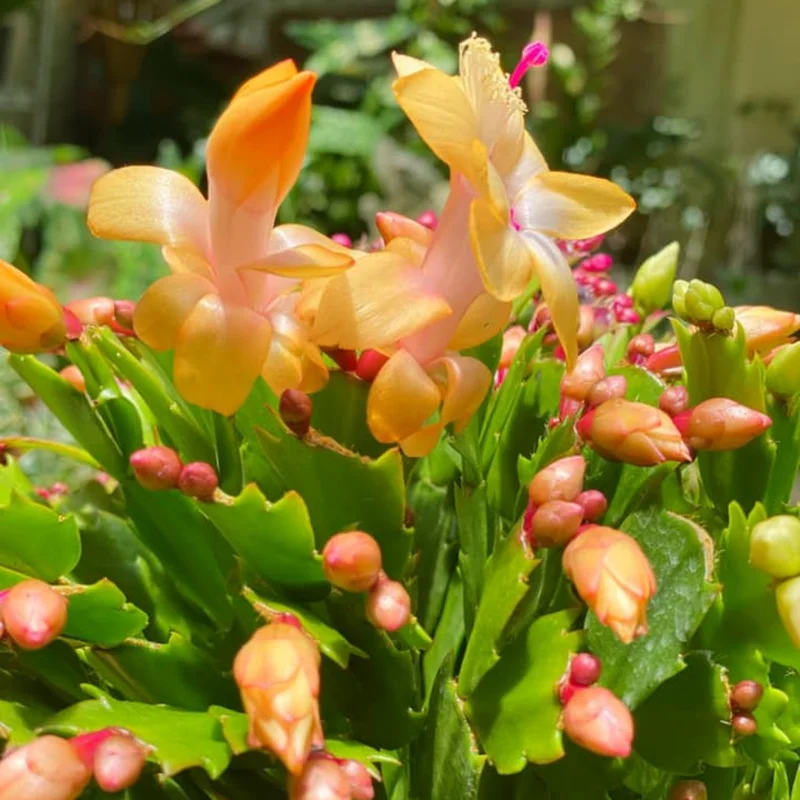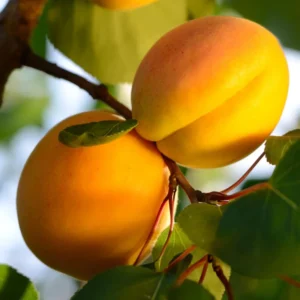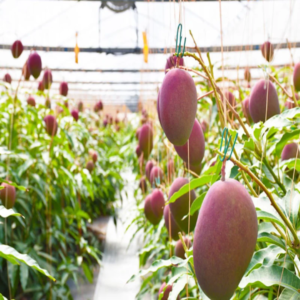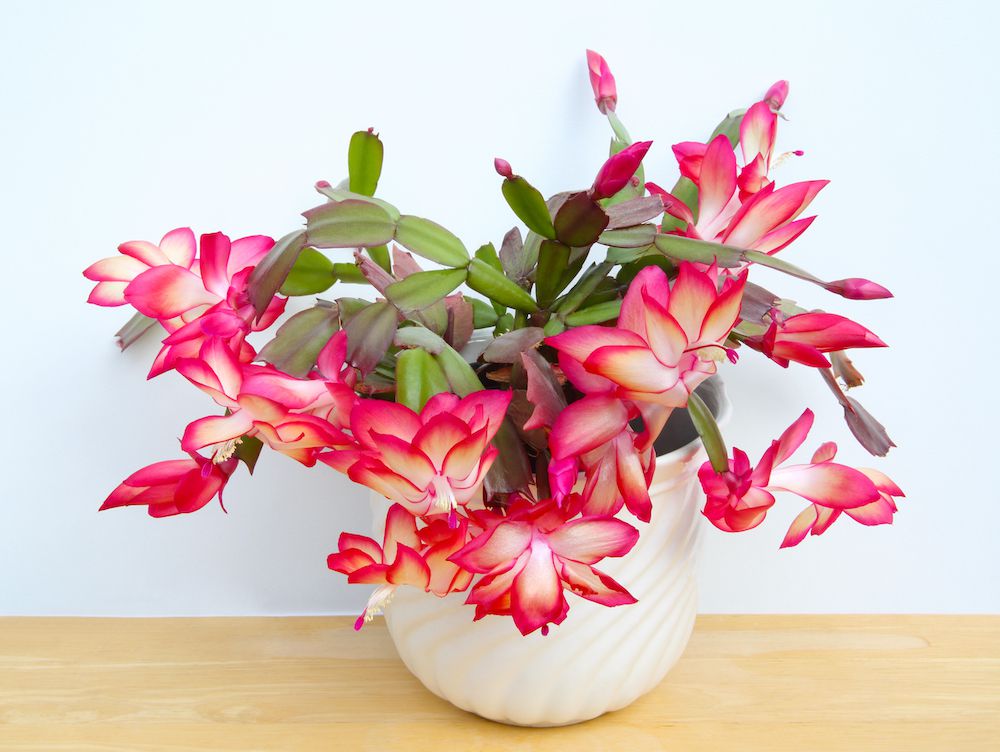-
×
 Yellow Sweet Mango Tree Plant, 7 to 10 Inc Mango Tree Live Plant, Live Mango Tree for Planting Outside
$39.89
Yellow Sweet Mango Tree Plant, 7 to 10 Inc Mango Tree Live Plant, Live Mango Tree for Planting Outside
$39.89 -
×
 Large Yellow Apricot Trees Plant Live, 3 to 4 Feet Tall in Gallon Pot, Apricot Trees, Sweet Flavor
$99.99
Large Yellow Apricot Trees Plant Live, 3 to 4 Feet Tall in Gallon Pot, Apricot Trees, Sweet Flavor
$99.99 -
×
 Live Neem Tree Plant, 4-9 Inch Tall, Well-Rooted Neem Seedling for Gardening, Neem Plant Live
$39.99
Live Neem Tree Plant, 4-9 Inch Tall, Well-Rooted Neem Seedling for Gardening, Neem Plant Live
$39.99 -
×
 Jaboticaba Tree, Black Jaboticaba Tree Live, Fruit Tree 2 Feet Tall In Gallon Pot No Ship To CA
$114.98
Jaboticaba Tree, Black Jaboticaba Tree Live, Fruit Tree 2 Feet Tall In Gallon Pot No Ship To CA
$114.98 -
×
 02 Cranberry Hibiscus Live Plants, Pink Hibiscus Plants, 4 to 6 Inches Tall, Hibiscus Plants Live, Hibiscus Flowers Plants, Hibiscus Starter Plants
$24.98
02 Cranberry Hibiscus Live Plants, Pink Hibiscus Plants, 4 to 6 Inches Tall, Hibiscus Plants Live, Hibiscus Flowers Plants, Hibiscus Starter Plants
$24.98 -
×
 Navel Orange Tree Live, Outdoor Orange Tree, Live Orange Fruit Tree 3 Feet Height Including Pot Tall For Growing No Ship To CA, HI, PR, GU, AK
$126.98
Navel Orange Tree Live, Outdoor Orange Tree, Live Orange Fruit Tree 3 Feet Height Including Pot Tall For Growing No Ship To CA, HI, PR, GU, AK
$126.98 -
×
 Orange Tree Live Plant, Honey Orange Fruit Tree, Fruit Tree Live 2 Feet Tall No Ship To CA
$119.99
Orange Tree Live Plant, Honey Orange Fruit Tree, Fruit Tree Live 2 Feet Tall No Ship To CA
$119.99 -
×
 Methley Plum Trees Live Plants - 2 Feet Tall Fruit Tree for Gardens
$59.99
Methley Plum Trees Live Plants - 2 Feet Tall Fruit Tree for Gardens
$59.99 -
×
 Large Silver Dollar Tree 1-2 Feet Tall in 6 Inc Pot, Silver Dollar Eucalyptus Live Plant, Fresh Eucalyptus for Indoor and Outdoor Planting
$57.99
Large Silver Dollar Tree 1-2 Feet Tall in 6 Inc Pot, Silver Dollar Eucalyptus Live Plant, Fresh Eucalyptus for Indoor and Outdoor Planting
$57.99 -
×
 Santa Rosa Plum Tree Live Plant, 2-3 Feet Tall, Sweet Plum Fruit Tree, Potted and Dormant for Home Gardens
$89.99
Santa Rosa Plum Tree Live Plant, 2-3 Feet Tall, Sweet Plum Fruit Tree, Potted and Dormant for Home Gardens
$89.99 -
×
 Grafted Mango Tree Plant, Live Julie Mango Tree Well Rooted, 2-3 Feet in 3 Gallon Pot, Sweet Mango Tree for Planting, No CA, HI, PR, GU, AK
$165.99
Grafted Mango Tree Plant, Live Julie Mango Tree Well Rooted, 2-3 Feet in 3 Gallon Pot, Sweet Mango Tree for Planting, No CA, HI, PR, GU, AK
$165.99 -
×
 Ruby Red Grapefruit Tree Live Plant in Pot, 1 to 3 Ft Tall, Live Pomelo Tree for Growing, Can Not Ship to TX, FL, AZ, CA, LA, HI
$112.99
Ruby Red Grapefruit Tree Live Plant in Pot, 1 to 3 Ft Tall, Live Pomelo Tree for Growing, Can Not Ship to TX, FL, AZ, CA, LA, HI
$112.99 -
×
 Liriope Muscari Lily Turf Live Plant, Aztec Ornameantal Grass Plant Live Clump, In 6 Inch Pot, Perfect for Ground Cover and Landscaping
$32.99
Liriope Muscari Lily Turf Live Plant, Aztec Ornameantal Grass Plant Live Clump, In 6 Inch Pot, Perfect for Ground Cover and Landscaping
$32.99
Blog Post
Growing Christmas Cactus
Are you looking to add a splash of color to your home during the holiday season? Or perhaps you’ve seen a friend’s blooming Christmas cactus and want one of your own but aren’t sure how to start?
Don’t worry; growing a Christmas cactus (Schlumbergera) is easier than you might think, even if you don’t have a green thumb!
This guide will walk you through everything you need to know about growing Christmas cactus, from planting and care to troubleshooting common issues, so you can enjoy lush, colorful blooms for years to come.
About the Christmas Cactus
The Christmas cactus isn’t your typical cactus. Unlike desert cacti, this plant is native to the tropical rainforests of Brazil, where it thrives in the humidity under tree canopies.

Know as a favorite of Christmas plants, Christmas Cactus is a succulent houseplant with petals that bloom in a kaleidoscope of colors, including red, white, pink, cream, and fuchsia. So it’s popular at holiday time and makes a great gift, too
Key Features
-
Scientific Name: Schlumbergera bridgesii
-
Plant Family: Cactaceae
-
Mature Size: 6–12 inches in height, with a similar spread
-
USDA Hardiness Zones: 10–12 (often grown as a houseplant elsewhere)
-
Growth Rate: Moderate
-
Bloom Time: Primarily November to January, with occasional secondary blooms in early spring
-
Attributes: Low-maintenance, non-toxic, air-purifying
Planting Your Christmas Cactus
Schlumbergera are forest cacti – in the wild, they grow in tropical rainforests, where they grow attached to trees. This means that need different growing conditions to desert cacti. They need to be kept away from bright sunlight and do best in a humid environment.
When to Plant
Christmas cactus is best planted or repotted in early spring, just after the blooming period ends. This allows the plant time to settle and grow new segments during warmer months.
Where to Place a Christmas Cactus
Unlike many other cacti that thrive in full sunlight, the Christmas cactus prefers bright but indirect light. An east-facing window or a well-lit bathroom provides ideal lighting without the risk of direct sun exposure, which can bleach their sensitive leaves. Direct sunlight, especially from the south or west, can cause the leaves to burn, so avoid it if possible.
-
Temperature: These plants do best with daytime temperatures around 70°F (21°C) and evening temperatures of 60-65°F (15-18°C).
-
Humidity: Christmas cacti prefer a more humid environment, so a bright bathroom or kitchen is an excellent choice.
During the summer, they can be placed outdoors in a shady spot in the garden or on an unheated porch. Just be sure to bring them inside once temperatures drop below 50°F (10°C) and keep them out of direct sunlight while outdoors.
Key Tip: If you notice the edges of the leaves turning reddish, your cactus is likely getting too much sun. Move it to a spot with softer light.
How to Plant Christmas Cactus
-
Choose a Pot: When choosing a pot for your Christmas cactus, be sure to choose a pot with drainage holes at the bottom. This helps keep the soil from getting too wet.
-
Prepare the Soil: Christmas cacti grow well in most potting mixes formulated for cacti. It is important that your potting soil drains well.
-
Transplanting: Gently remove the plant from its old pot, shake off excess soil, and place it in the new container.
-
Watering After Planting: Water sparingly, allowing the soil to dry slightly between watering sessions.
Where to Place a Christmas Cactus Cactus should be kept in a location with bright, indirect light. An east-facing window or a bright bathroom is ideal. Too much direct sunlight can fade sensitive leaves. Prioritize daytime temperatures of 70°F (21°C) and evening temperatures of 60-65°F (15-18°C). Christmas cacti prefer humid environments, which makes a bright bathroom or kitchen a good place to keep them. During the summer, Christmas cacti can be placed in a shady spot in the garden or on an unheated porch until temperatures drop below 50°F (10°C). Keep them away from direct outdoor sunlight.
Fun fact: You might be surprised to learn that a Christmas cactus can live for 20 to 30 years. Imagine passing down a living, flowering plant to your children or grandchildren! According to The Old Farmer’s Almanac, with proper care, Christmas cacti can thrive for decades. To encourage blooming each year, provide it with long nights starting around October 1. Cool night temperatures also help stimulate the blooms.
Growing Christmas Cactus
Fertilization
To encourage healthy growth, fertilize your Christmas cactus every month from spring through early fall. Use a balanced liquid fertilizer diluted to half strength. Stop fertilizing from October onward to encourage blooming. Over-fertilizing can lead to lush foliage but fewer flowers, so be cautious with it.
Watering
One of the most common mistakes people make is treating a Christmas cactus like a desert cactus. These plants actually like more moisture, so avoid letting the soil dry out completely. Christmas cactus prefers consistently moist soil, but it should never be soggy.
-
Watering Frequency: Water when the top inch of soil feels dry. Typically, this means every 2-3 weeks in winter and more frequently in summer or when the top 1/3 of the soil layer feels dry with your hand. For example, if the plant is in 6 inches of soil, water when the top 2 inches feel dry.
Soil
The Christmas cactus thrives in a well-draining potting mix. A blend made for succulents or cacti will work well, but adding some peat moss to increase moisture retention is a good idea. Repot your cactus every 2-3 years in spring, when it’s beginning to grow again.
Common Problems and Solutions
Growing a Christmas cactus isn’t without its challenges. Here are a few common problems and how to solve them:
-
Bud Drop: If your buds fall off before blooming, it could be due to sudden temperature changes, too much light, or underwatering. Keep conditions stable and avoid drafts.
-
Wilted Leaves: This usually means your plant is either overwatered or underwatered. Check the soil and adjust your watering routine as needed.
-
Yellow Leaves: Often caused by poor drainage or too much water. Make sure your pot has good drainage and only water when the top inch of soil feels dry.
Pro Tip: Keep an eye out for pests like mealybugs and spider mites. If you notice these, rinse the plant with water or use an insecticidal soap.
Growing Christmas Cactus in Pots vs. Garden Beds
While Christmas cactus can be grown in outdoor beds in frost-free areas, it’s typically best suited for container gardening:
-
Pots: Easier to manage watering and sunlight indoors.
-
Garden Beds: Only viable in USDA zones 10–12, where frost isn’t a concern. Ensure shaded conditions and well-draining soil.
How to Make a Christmas Cactus Bloom
If you’ve ever struggled to get your Christmas cactus to bloom, you’re not alone. The secret lies in a combination of cooler temperatures, darkness, and strategic watering.
-
Reduce Watering: Allow soil to dry more in early fall (October).
-
Provide Darkness: Place the plant in darkness for 12-14 hours each night in October. A closet or dark room works well.
-
Cool Temperatures: Ensure nighttime temperatures stay between 50-60°F (10-15°C) during this period.
After about 6-8 weeks of this routine, you should start to see buds forming. Resume regular light and watering once buds appear.

Christmas Cactus Propagation
Propagating a Christmas cactus is a simple and rewarding process, allowing you to create new plants from cuttings. Follow these steps to ensure successful propagation.
-
Choose Healthy Segments: Select a healthy section of the plant with at least 2-3 connected leaf segments. Avoid using any segments that appear damaged or discolored.
-
Take the Cutting: Using clean, sharp scissors or shears, cut the segment just above the joint.
-
Allow to Callous: Let the cuttings dry and callous over for 24 hours. This step is crucial to prevent rot when they are planted.
Christmas cactus cuttings prefer a humid environment to encourage root growth. Covering the pot loosely with a clear plastic bag can help to retain humidity if needed, but be sure to airflow to prevent mold.
Care for Your New Plants
-
Rooting Time: Roots typically begin to develop within 2-3 weeks. You can gently tug on the cutting to check if it has rooted.
-
Transition to Regular Care: Once rooted, gradually begin caring for your new plant as you would a mature Christmas cactus. This includes watering when the top inch of soil feels dry and providing bright, indirect light.
How to Get Christmas Cactus Bloom
The blooms of Christmas cacti and its relatives are triggered by the cooler temperatures and longer fall nights. It tends to bloom from early winter to mid-winter.
Why Christmas Cactus not Blooming
If your Christmas cactus isn’t blooming, it may be due to excessive light exposure or temperatures that are too high. Try these tips to encourage flower production:
-
Create Long Nights: To trigger blooming, the plant needs at least 14 hours of darkness and 8–10 hours of daylight each day for at least six weeks. If you have strong indoor lights on at night, consider covering the cactus or moving it to an area that follows the natural light cycle.
-
Optimal Temperature Range: Flower buds form best when the plant is kept at temperatures between 50 and 60°F (10–15°C).
-
Kickstart Budding: For a boost, expose the plant to temperatures around 45°F (7°C) for several consecutive nights.
-
Consistent Watering: While the plant is budding and blooming, keep the soil consistently moist, but not soggy. If it dries out too much, the buds may drop.
-
Patience if Buds Drop: If the cactus loses its buds one winter, don’t worry—it’s likely to bloom the following year with proper care.
Frequently Asked Questions (FAQs)
-
Why isn’t my Christmas cactus blooming?
-
Blooming requires a period of darkness, cool temperatures, and reduced watering. Follow the blooming tips outlined above.
-
-
Can I grow Christmas cactus outdoors?
-
Only in USDA zones 10–12, where there’s no frost. It still needs shaded, indirect light outdoors.
-
-
How often should I water my Christmas cactus?
-
Water when the top inch of soil is dry, more often in summer and less frequently in winter.
-
-
Why are the leaves on my Christmas cactus turning red?
-
This is usually due to excess sun exposure or nutrient deficiencies. Move it to indirect light and consider a balanced fertilizer.
-
-
How can I prevent root rot in my Christmas cactus?
-
Use a well-draining soil mix and avoid overwatering. Water only when the top inch of soil feels dry.
-
Remember, these plants are known for their longevity and can live for decades with proper care. Explore our collection of Christmas cactus to beautify your home all year.

 Large Yellow Apricot Trees Plant Live, 3 to 4 Feet Tall in Gallon Pot, Apricot Trees, Sweet Flavor
Large Yellow Apricot Trees Plant Live, 3 to 4 Feet Tall in Gallon Pot, Apricot Trees, Sweet Flavor  Live Neem Tree Plant, 4-9 Inch Tall, Well-Rooted Neem Seedling for Gardening, Neem Plant Live
Live Neem Tree Plant, 4-9 Inch Tall, Well-Rooted Neem Seedling for Gardening, Neem Plant Live  Jaboticaba Tree, Black Jaboticaba Tree Live, Fruit Tree 2 Feet Tall In Gallon Pot No Ship To CA
Jaboticaba Tree, Black Jaboticaba Tree Live, Fruit Tree 2 Feet Tall In Gallon Pot No Ship To CA  02 Cranberry Hibiscus Live Plants, Pink Hibiscus Plants, 4 to 6 Inches Tall, Hibiscus Plants Live, Hibiscus Flowers Plants, Hibiscus Starter Plants
02 Cranberry Hibiscus Live Plants, Pink Hibiscus Plants, 4 to 6 Inches Tall, Hibiscus Plants Live, Hibiscus Flowers Plants, Hibiscus Starter Plants  Navel Orange Tree Live, Outdoor Orange Tree, Live Orange Fruit Tree 3 Feet Height Including Pot Tall For Growing No Ship To CA, HI, PR, GU, AK
Navel Orange Tree Live, Outdoor Orange Tree, Live Orange Fruit Tree 3 Feet Height Including Pot Tall For Growing No Ship To CA, HI, PR, GU, AK  Orange Tree Live Plant, Honey Orange Fruit Tree, Fruit Tree Live 2 Feet Tall No Ship To CA
Orange Tree Live Plant, Honey Orange Fruit Tree, Fruit Tree Live 2 Feet Tall No Ship To CA  Methley Plum Trees Live Plants - 2 Feet Tall Fruit Tree for Gardens
Methley Plum Trees Live Plants - 2 Feet Tall Fruit Tree for Gardens  Large Silver Dollar Tree 1-2 Feet Tall in 6 Inc Pot, Silver Dollar Eucalyptus Live Plant, Fresh Eucalyptus for Indoor and Outdoor Planting
Large Silver Dollar Tree 1-2 Feet Tall in 6 Inc Pot, Silver Dollar Eucalyptus Live Plant, Fresh Eucalyptus for Indoor and Outdoor Planting  Santa Rosa Plum Tree Live Plant, 2-3 Feet Tall, Sweet Plum Fruit Tree, Potted and Dormant for Home Gardens
Santa Rosa Plum Tree Live Plant, 2-3 Feet Tall, Sweet Plum Fruit Tree, Potted and Dormant for Home Gardens  Grafted Mango Tree Plant, Live Julie Mango Tree Well Rooted, 2-3 Feet in 3 Gallon Pot, Sweet Mango Tree for Planting, No CA, HI, PR, GU, AK
Grafted Mango Tree Plant, Live Julie Mango Tree Well Rooted, 2-3 Feet in 3 Gallon Pot, Sweet Mango Tree for Planting, No CA, HI, PR, GU, AK  Ruby Red Grapefruit Tree Live Plant in Pot, 1 to 3 Ft Tall, Live Pomelo Tree for Growing, Can Not Ship to TX, FL, AZ, CA, LA, HI
Ruby Red Grapefruit Tree Live Plant in Pot, 1 to 3 Ft Tall, Live Pomelo Tree for Growing, Can Not Ship to TX, FL, AZ, CA, LA, HI  Liriope Muscari Lily Turf Live Plant, Aztec Ornameantal Grass Plant Live Clump, In 6 Inch Pot, Perfect for Ground Cover and Landscaping
Liriope Muscari Lily Turf Live Plant, Aztec Ornameantal Grass Plant Live Clump, In 6 Inch Pot, Perfect for Ground Cover and Landscaping 



